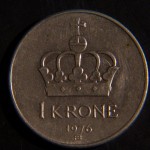Yesterday’s trade saw EUR/USD within the range of 1.0946-1.1049. The pair closed at 1.0991, up 0.10% on a daily basis, while extending gains from Friday. The daily high has been the highest level since November 2nd, when the cross registered a high of 1.1053.
At 7:26 GMT today EUR/USD was gaining 0.31% for the day to trade at 1.1027. The pair touched a daily high at 1.1039 at 7:15 GMT, undershooting the upper range breakout level (R4). As the 50.00% Fibonacci (1.1010), reflecting the descent from October 15th high to December 3rd low, has been breached, the pair may next encounter resistance at the 61.80% Fibonacci (1.1126). Immediate support may be received at the hourly 21-period EMA (1.1007) and after that – at the low from December 14th (1.0946).
Today EUR/USD trading may be influenced by a number of macroeconomic reports as listed below.
Fundamentals
Euro area
ZEW Survey – Economic Sentiment and Current Situation
The gauge of economic sentiment in Germany probably showed improvement for a second straight month in December to reach a reading of 15.0, according to the median forecast by experts. If so, it would be the highest index value since August 2015, when the gauge was reported at 25.0. In November the index came in at 10.4.
The ZEW (Zentrum für Europäische Wirtschaftsforschung) economic expectations index is reported on a monthly basis. The study encompasses up to 350 financial and economic analysts. The indicator reflects the difference between the share of analysts, that are optimistic and those, that are pessimistic about the expected economic development in Germany over the next six months. A positive value indicates that the proportion of optimists is larger than that of pessimists. A ZEW reading of -100 suggests that all analysts are pessimistic about the current developments and expect economic conditions to deteriorate. A ZEW reading of 100 implies that all analysts are optimistic about the current situation and expect conditions to improve. A ZEW reading of 0 indicates neutrality.
The index of current assessment in Germany probably ticked up to 54.5 in December, according to market expectations, from 54.4 in November. The latter has been the lowest reading since February 2015, when the indicator was reported at 45.5.
The ZEW Economic Sentiment index for the whole Euro region probably rebounded in December to reach a value of 34.4, according to market expectations. In November the index of sentiment stood at 28.3, or the lowest value since November 2014, when a level of 11.0 was registered.
In case the German gauge of economic sentiment decreased at a sharper pace than expected, this would have a strong bearish effect on the common currency. The official numbers are scheduled to be released at 10:00 GMT.
United States
Consumer Inflation
The annualized consumer inflation in the United States probably accelerated to 0.5% in November, according to market expectations, from 0.2% in October. If so, it would be the highest rate of inflation since December 2014, when the annual CPI rose 0.8%. In monthly terms, the Consumer Price Index (CPI) probably remained flat in November, after a 0.2% increase in October.
In October upward pressure came from cost of services less energy (up 2.8% year-on-year). Within the category, cost of shelter went up 3.2% year-on-year, cost of medical care rose 3.0% and cost of transportation services increased 1.8%. Additionally, consumers paid more for food in October (up at an annualized rate of 1.6%), according to the report by the Bureau of Labor Statistics. The largest downward pressure on the annual CPI came from prices of energy (down 17.1% in October from a year ago).
The annualized core consumer inflation, which is stripped of prices of food and energy, probably accelerated to 2.0% in November, according to expectations, from 1.9% registered in September and October. If so, Novembers core inflation would be the highest since May 2014. It is usually reported as a seasonally adjusted figure, because consumer patterns are widely fluctuating in dependence on the time of the year. The Core CPI is a key measure, because this is the gauge, which the Federal Reserve Bank takes into account in order to adjust its monetary policy. The Fed uses the core CPI, because prices of food, oil and gas are highly volatile, while the central bank’s tools are slow-acting. In case, for example, prices of oil plunge considerably (as is the present situation), this could result in a low rate of inflation, but the central bank will not take action until this decrease affects prices of other goods and services.
If the CPI tends to approach the inflation objective, set by the Federal Reserve and considered as providing price stability, or a level below but close to 2%, this will usually bolster the appeal of the US dollar.
In case actual CPI performance came in line with expectations or even exceeded them, this would add to the case for a rate hike later this week.
The Bureau of Labor Statistics is to release the official CPI report at 13:30 GMT.
NAHB Housing Market Index
The National Association of Home Builders (NAHB) Housing Market Index probably rose in December to a reading of 63.0, according to market expectations, from 62.0 reported in the preceding month. If so, this would be the 18th consecutive month, when the gauge stood in the area above 50.0. The indicator is based on a monthly survey in regard to current home sales and expected sales in the coming six months. Values above the key level of 50.0 indicate that housing market conditions are good. Therefore, higher-than-projected readings would provide support to the US dollar. The official data is scheduled for release at 15:00 GMT.
Bond Yield Spread
The yield on German 2-year government bonds went as high as -0.330% on December 14th, after which it closed at -0.336% to add 0.007 percentage point in comparison with December 11th. It has been the 5th gain in the past 16 trading days.
The yield on US 2-year government bonds climbed as high as 0.960% on December 14th, or the highest level since December 7th (0.967%), after which it closed at 0.952% to add 7.3 basis points (0.073 percentage point) compared to December 11th. It has been the 15th gain in the past 21 trading days.
The spread between 2-year US and 2-year German bond yields, which reflects the flow of funds in a short term, expanded to 1.288% on December 14th from 1.222% on December 11th. The December 14th yield spread has been the largest one since December 2nd, when the difference was 1.382%.
Meanwhile, the yield on German 10-year government bonds soared as high as 0.587% on December 14th, after which it slid to 0.566% at the close to add 2.3 basis points (0.023 percentage point) compared to December 11th. It has been the 6th gain in the past 16 trading days.
The yield on US 10-year government bonds climbed as high as 2.230% on December 14th, after which it slipped to 2.220% at the close to add 8.8 basis points (0.088 percentage point) compared to December 11th. It has been the 7th gain in the past 21 trading days.
The spread between 10-year US and 10-year German bond yields expanded to 1.654% on December 14th from 1.589% on December 11th. The December 14th yield difference has been the largest one since December 10th, when the spread was 1.664%.
Daily and Weekly Pivot Levels
By employing the Camarilla calculation method, the daily pivot levels for EUR/USD are presented as follows:
R1 – 1.1000
R2 – 1.1010
R3 (range resistance) – 1.1019
R4 (range breakout) – 1.1048
S1 – 1.0982
S2 – 1.0971
S3 (range support) – 1.0963
S4 (range breakout) – 1.0934
By using the traditional method of calculation, the weekly pivot levels for EUR/USD are presented as follows:
Central Pivot Point – 1.0942
R1 – 1.1091
R2 – 1.1191
R3 – 1.1340
S1 – 1.0842
S2 – 1.0693
S3 – 1.0593





